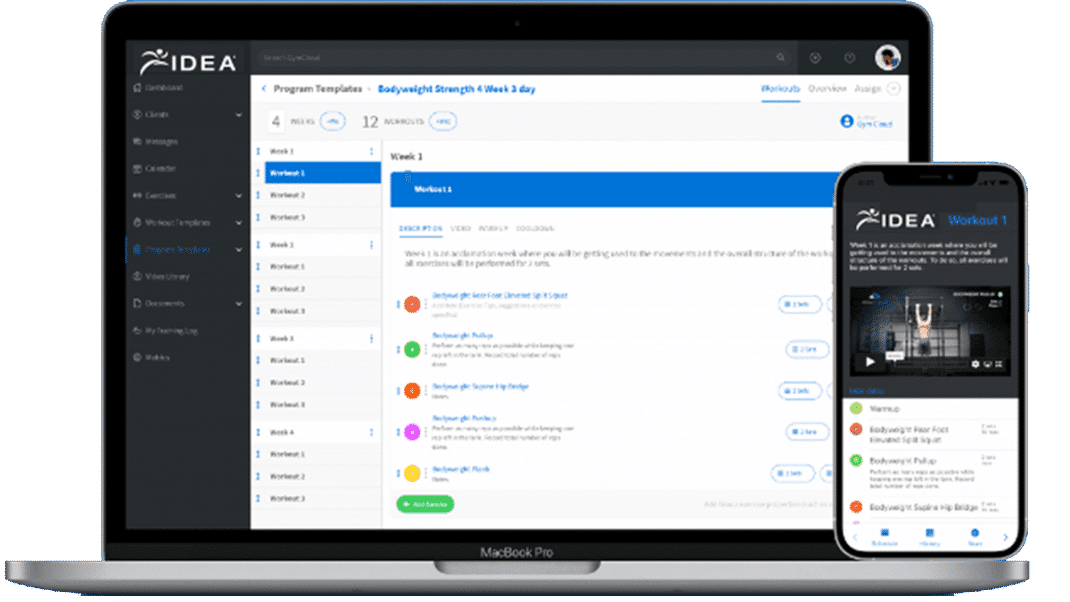Functional Fitness Facilities: A Refresher
Pay attention to the “little things” that can make or break your business.
The past few years have been challenging for the fitness industry. With the economic downturn and the emergence of low-cost fitness centers, members are increasingly sensitive to costs and aware of services, programs and quality. Retention has become more and more challenging. Even previously loyal customers are likely to leave if another facility better meets their expectations. As for potential members and clients—they need to be wooed like never before.
So what can fitness facilities—no matter the square footage—do to ensure they stay at the top? It is the little things that matter most, along with the overall functioning of the club. This dynamic duo will make the difference to your customers. Functional exercises and programs abound, but now may be the time to determine whether your facility is as functional as it should be, and to take a look at what you are (or aren’t) doing!
Details, Details
I’ve worked in about 50 countries on six continents and experienced many different types of fitness facilities and spas in various capacities—as instructor, personal trainer, manager, director, guest presenter, master trainer and consultant—and, more important, as potential customer, guest, short-stay client and paying member. I have learned a very important lesson: when it comes to overall functionality, little things are frequently overlooked, neglected or completely forgotten.
As a result, I’ve put together a mental checklist of items that affect how a club functions and how this in turn impacts quality of service. While small details here or there may not seem that important, they make a big difference to members. Although these particulars may not bring in revenue per se, overlooking them may lead to member attrition.
To get off to the right start, managers, directors and owners can pay attention to the three areas discussed below. Each one strongly influences how a club functions, and collectively they determine the overall customer experience.
A Winning Welcome
The front desk is the first and last place members interact with the facility during any given visit. This is where the tone is set, not just for that particular day, but for future visits as well. When members arrive, they are usually in workout mode, with a desire to sign in, get to the changing rooms and start exercising as quickly as possible. To avoid any hiccups along the way, the reception area should be designed for easy flow in and out. The following checklist offers guidance on how to take care of the specifics:
- Avoid bottlenecks by ensuring there is adequate space around the front desk, with sign-in and sign-out areas clearly indicated.
- Automate! If membership cards are handed over or scanned, the process should be quick, simple and easy for both members and staff.
- Keep the front-desk area free of collateral materials such as brochures, timetables, etc. Designate a specific area for these items so that members don’t congregate in front of the reception and check-in area.
- Streamline the procedure for borrowing towels, locker keys or locks, if you offer these services.
- Design the area behind the front desk so that staff can move freely, permitting easy access to computers, phones, drawers, towels, keys, etc.
- Schedule adequate staff, knowing that the reception area is busier on certain days of the week and at certain times of the day. Remember that members expect the same high level of service, regardless of the time or day of the week.
- Make departing the facility a hassle-free experience. Signing out or returning a towel, locker key or membership card should be easy and quick.
A Place for “Things”
When members arrive at your facility, they expect to be able to put all of their personal items (clothes, shoes, toiletries, valuables, etc.) in a clean and spacious locker specifically designed for that purpose—a mini closet of sorts. Unfortunately, this is not often the case. Unclean, nonfunctional lockers have become the norm. Members are obliged to fold and place clothes on top of each other, along with a computer bag, briefcase or handbag—not to mention a knapsack or gym bag plus soap, shampoo and towel.
The best lockers are clean and smell good. They have shelves; a designated place for shoes; and hangers for coats, shirts, pants, and skirts or dresses. Yes, upgrading your locker room means incurring additional cost, but having easy access to personal items creates a more positive and enjoyable visit for members, and you can market the upgrade as an additional amenity. If you simply can’t replace existing lockers, you can still make them more functional by adding individual shelving and extra hangers or hooks.
Let’s take this a step further. A member has now changed into her workout gear, and she heads to the cardio area for a long run on the treadmill. Carrying a towel, water bottle and iPod with her, she decides to go to the bathroom before starting her workout. Once there, she looks around to see where she can put everything. What she ends up doing is placing everything on the floor of the stall, on top of the toilet roll dispenser (inevitably, something falls on the floor), on a sink counter (which is always wet) or wherever she can find a spot. Save your members this frustrating scenario by simply installing small shelves in the areas where they are likely to put their belongings. At the very least, install hooks for towels and clothing items on the inside of stall doors or on the walls.
Take the same approach with workout areas and group exercise rooms. Members often resort to putting personal possessions on the floor, under a bench or near a piece of equipment. Not only does this create a cluttered space; it’s also a potential safety hazard. Fitness equipment manufacturers have addressed this by creating holders for bottles, MP3 players, magazines and books. Car manufacturers have done this as well. Isn’t it time that fitness facility designers, directors and managers jumped on the bandwagon?
Give Me Some Space
When setting up the strength and cardio areas, you must determine which equipment will be installed and where; how each machine functions; how many people are expected to be in those areas at any given time; and how easily members will be able to move between the machines and around each other. Fitness facility designers use different formulas for determining how much space is needed per person on the strength training or cardio floors. For example, the American College of Sports Medicine (ACSM) recommends providing 25–50 square feet (7.6–15.2 square meters) per piece of equipment, plus an additional 10%–15% for circulation (ACSM 2007). In any case, safety, functionality and comfort must always be taken into consideration.
When reviewing your cardio and strength areas, note the following tips:
- Avoid placing cardio equipment too close together. Allow members enough space to get on and off all machines safely.
- Remember that people come in all body types, sizes, girths and heights. Allow members plenty of “breathing space” as they work out.
- Bear in mind that many strength machines have moving parts, to allow for proper function, so it’s essential to determine the space that members will need when using the machines at maximum range of motion. Also consider the additional space that members will need to move freely around machines when they are in use.
- Keep in mind that some machines are self-contained and don’t require additional space, while others go beyond their original dimensions. Plan accordingly.
- Keep the free-weights area free. In other words, include enough unrestricted space to allow members to use dumbbells, bars and cable-based equipment in all three planes of motion while performing dynamic movements such as squats, lunges, rotations, jumps, etc.
- If possible, avoid placing free weights in a small space in the corner with lots of other equipment and no mirrors. This makes it difficult for members to work properly and increases the risk of injury to others.
- Strategically place storage racks for weights, balls, handles and other equipment so that it’s easy for members to return equipment after use and so the floor stays clear of obstacles.
- Consider moving weight racks if they are against a mirror. Not only do they obscure the user’s view, but this placement essentially guarantees the mirrors will get cracked. Make free-weight areas as spacious and clutter-free as possible!
- Conduct a test run before signing off on equipment placement.
Remember: minutiae matters! Take a step back and look at your overall operation. If your systems aren’t running smoothly, perhaps it’s the little things that need to be reviewed and remastered. The investment in time, energy and perhaps money will pay off with happier members who will respond to the subtle changes by staying and sharing the word about your attention to details.
Attention to detail is especially important in the shower area. It may seem like common sense, but many facilities don’t have holding areas for all the shower essentials. Make sure there are hooks for towels, shoe holders for flip-flops and shower sandals, and shelves inside the stalls for soap, shampoo, etc. Also ensure that you have proper flooring for wet areas and that your cleaning protocol is top-notch. You can pay attention to all the details in other areas of your facility, but miss one fine point in your shower area and that is what your members will notice and remember.
References
American College of Sports Medicine (ACSM). 2007. ACSM’s Health/Fitness Facility Standards and Guidelines (3rd ed.). Champaign, IL: Human Kinetics.
Fred Hoffman, MEd
Fred Hoffman, MEd, is the owner of Fitness Resources consulting services and the author of Going Global: An Expert's Guide to Working Abroad in the International Fitness Industry. The recipient of the 2019 IDEA China Fitness Inspiration Award and the 2007 IDEA Fitness Instructor of the Year Award, he holds a master's degree in health education from Boston University and has over 35 years of experience in the fitness and health industry. A member of the ACE board of directors, Fred's expertise has taken him to nearly 50 countries on six continents to speak at more than 200 conferences and conventions. In 2001, he was elected to the International Who's Who of Professionals. Certifications: ACE, ACSM






